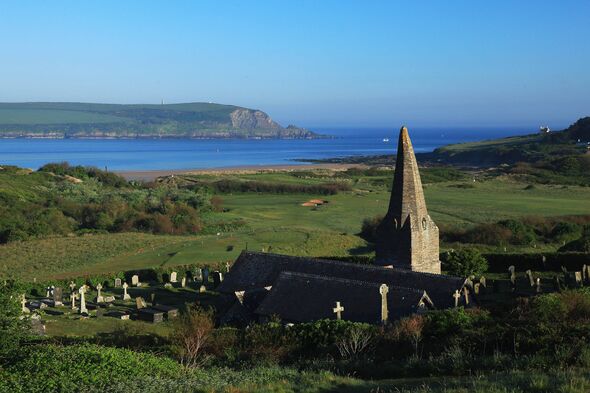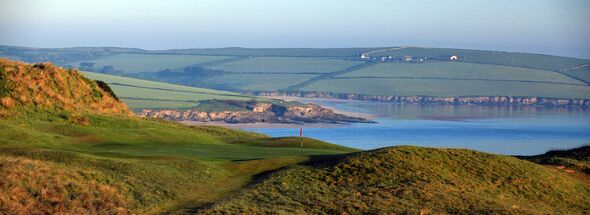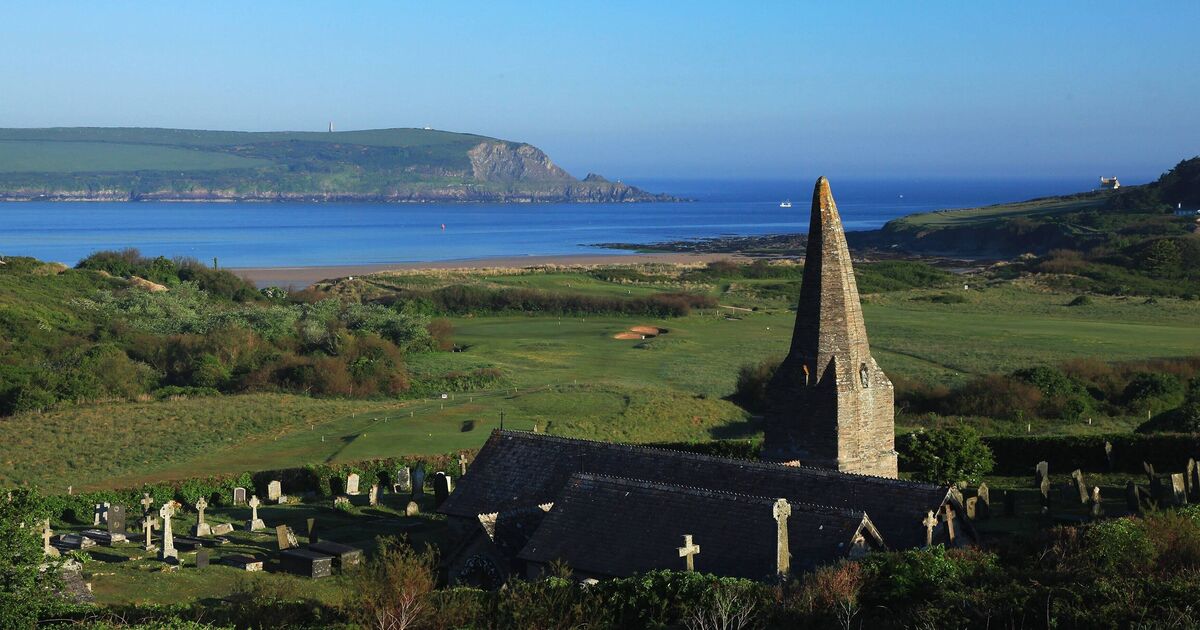
St Enodoc’s enchanting Church course is now among the very best in British and world golf (Image: David Cannon, Getty Images)
Tucked amid the undulating dunes of north Cornwall’s rugged coast lies one of England’s most idiosyncratic golfing gems – St Enodoc’s Church Course. It is a place of quirks and questions, of windswept brilliance and spiritual calm.
And it is arguably St Enodoc Church course, more so than any other within the British Isles right now, that is hot on the lips of avid golfers. Why, you ask? Well this devilishly designed natural masterpiece happens to have rocketed up the world golf rankings at a ferocious pace.
As per the recently revised rankings from Top100golfcourses, St Enodoc Church now places at 49th on the entire planet. That’s right, Cornwall’s crown jewel is now higher than the likes of Bethpage Black, Pinehurst No.2 and Bandon Dunes. Guests and visitors alike are continually blown away by what greets them at St Enodoc, and Express Sport wanted to find out exactly why.
Founded in 1890 and famously reshaped by James Braid in the early 20th century, St Enodoc Golf Club exudes tradition without being draped in pomp. The Church Course – the club’s pièce de résistance – is a links in the truest sense: wild, exposed, unpredictable, and thoroughly exhilarating.
Set just outside the picturesque village of Rock, with views stretching across the Camel estuary toward Padstow, the course is perched on prime golfing land. Rumpled terrain that seems purpose-built for those who appreciate the game in its rawest, most elemental form.
Braid’s 1907 design, though touched over time, remains largely intact. It dances across dunes and cliffside, its routing dictated more by nature’s whim than human ambition. The result is a layout that offers endless charm, a relentless breeze, and a meditative sense of isolation.
Pulling into the club feels less like arriving at a destination and more like plunging into a different pace of life. The modest clubhouse, far from ostentatious, is warm and welcoming. A scattering of tartan, friendly staff, and a view from the terrace that could hush the most chattiest of four-balls.

The signature par 4, 6th hole with the ‘Himalaya’ bunker that is one of the largest in world golf (Image: David Cannon, Getty Images)
There’s a hum of authenticity here. History adorns the walls, connecting distant past to the very present day. The locker rooms are understated yet true to the identity of this proud golf club. Indeed, everything feels very homely, with a sense of tangible respect for its setting. This is Cornwall after all: proud, windswept, and slightly rebellious.
Stepping out onto the first, the senses sharpen. A long opener which offers stunning views down into the track itself. One stands between the tee markers like a gladiator peering out into the amphitheatre. Take a deep breath, it’s time for action…
Hole 1 – 518 yards, Par 5: A soft handshake or a swift slap, depending on the wind. This opener glides downhill toward distant dunes, offering a wide but aggressively undulating fairway with an ever-narrowing approach. Miss right and you’ll be making small talk with the gorse.
Hole 2 – 438 yards, Par 4: The tee shot into rippling ground toward a fairway that falls away to the right. There is space, though precision matters here – as does a little nerve when approaching a rather unpredictable putting surface.
Hole 3 – 436 yards, Par 4: A deliciously dazzling hole, requiring a blind tee shot downhill, into a fairway which falls off aggressively left and meanders down into a path which slices the hole in two, trimmed by an ageing brick wall which holds secrets of yesteryear. The second shot defines this hole and the scorecard thereafter. Braid’s teeth beginning to show early.

After rocketing up the rankings, St Enodoc Church now sits within the top 50 in the world (Image: David Cannon, Getty Images)
Hole 4 – 292 yards, Par 4: A small hole but by no means straightforward. Strongly uphill, with a large and encroaching OB area to the right. Avoid this safely and a bottle-neck green must be entered with accuracy.
Hole 5 – 161, Par 3: Short and sharp. A raised tee, a crosswind, and a narrow landing zone. The green is protected by a steep slope and firm surrounds – no place for half-hearted wedges.
Hole 6 – 378 yards, Par 4: An icon, and the signature hole of a course which has one memorable offering after another. Here you’ll meet the cavernous natural bunker, one of the largest in world golf. Make the acquaintance brief, but not intimate. Falling into this trap is a poison without tonic.
The Heart of the Matter – Holes 7 to 12
Hole 7 – 394 yards, Par 4: Another blind drive and another lesson in trust. The second shot is slightly downhill into a green which appears larger than it actually is. On a calm day it’s a birdie chance. On a windy one, it’s anyone’s guess.
Hole 8 – 155 yards, Par 3: A beast of a par three. Elevated tee, crosswinds howling off the estuary, and a cruel mistress of a green with a steep run-off area behind, and no fewer than seven pot bunkers flanking its perimeter.
Hole 9 – 393 yards, Par 4: Fire over rugged mounds from the tee, into a landing area which feels like a mirage – particularly with the sea shimmering peacefully to your left. Finding the fairway is easier than it first feels, while the approach shot must hone in on a green framed strongly by wind-bent trees.
Hole 10 – 457 yards, Par 4: This begins the churchside sequence. The first view of the famed St Enodoc Church – the final resting place of Sir John Betjeman and an almost surreal landmark mid-round – emerges from the tee, sitting just right of the green in the distance. It forms a nice target line, though the narrow valley of a fairway below requires precision and a generous helping of Lady Luck. This hole is score index one for good reason.

ROCK, CORNWALL – MAY 24: The approach to the green on the par 4, 1st hole at the St Enodoc Golf Club, on May 24, in Rock, England. (Photo by David Cannon/Getty Images) (Image: David Cannon, Getty Images)
Hole 11 – 205 yards, Par 3: Long and accurate will be rewarded here. This less dramatic hole allows a moment to catch breath, though a par is absolutely not a guarantee. A cluster of trees and shrubbery sit left of the green and appeared well versed in stealing golf balls. Get complacent and this hole will bite.
Hole 12 – 386 yards, Par 4: Classic links. A serpentine fairway with gnarly lies and pot bunkers hidden just beneath the ridgelines. Patience and a punch shot may be your best friends here.
The Finishing Stretch – Holes 13 to 18
Hole 13 – 360 yards, Par 4: With the church now sitting tucked to your right, the play with the tee shot here is a solid drive placed central, not meandering the extra distance to two hungry bunker positioned just yards apart. A slightly uphill approach shot will ask many questions of even the most able ball-strikers.

ROCK, CORNWALL – MAY 23: The par 4, 6th hole with the ‘Himalaya’ bunker at the St Enodoc Golf Club, on May 22, in Rock, England. (Photo by David Cannon/Getty Images) (Image: David Cannon, Getty Images)
Hole 14 – 355 yards, Par 4: Here you tee off beside the church itself, peering down among the gravestones on this most enchanting of golf holes. The fairway looms up hill, studding with mounds and offering unfavourable bounces. A tight green is tucked beyond, with a steep fringe into its entry. A thinker of a hole, this is Braid doing his best to unsettle your rhythm.
Hole 15 – 168 yards, Par 3: A downhill par three with a green that seems to float in the distance, the coastline and river camel twinkling beyond. Club selection is essential, and anything long brings the rough’s worst nightmares.
Hole 16 – 551 yards, Par 5: One of the most scenic holes on the course. A high tee box, panoramic views, and a fairway that tumbles downhill like a forgotten cart path. The approach is semi-blind but generous, with a birdie opportunity very much on the cards for all. Play this one well and you’ll remember it forever.
Hole 17 – 206 yards, Par 3: A picture book one-shotter for those with distance, and bravery. Both components are vital. An entry fairway runs quite sharply uphill to a troubling green, trimmed entirely by swirling swales.

The approach to the green on the par 4, 1st hole, as golfers embark upon their journey (Image: David Cannon, Getty Images)
Hole 18 – 446 yards, Par 4: A final statement. Straight into the teeth of the wind, the fairway bucks and weaves like a spooked horse. The approach is long, uphill, and most likely blind. Par here is a feat. Walk off with a four and you’ve earned your post round beverage.
Once hands have shaken and clubs have clinked back safely into golf bags, the clubhouse offers one of the best 19th holes in the country – a terrace view that captures the full sweep of the dunes, the estuary, and beyond. The food is hearty, the beer local, and the atmosphere delightfully unspoiled.
St Enodoc also offers the shorter Holywell Course, a friendlier, inland alternative perfect for beginners or a quick loop, but it’s the Church that pulls the faithful from across the UK and beyond.

The green on the par 3, 17th hole is a fierce challenge and does not give pars away willingly (Image: David Cannon, Getty Images)
Indeed, this track is not for the faint-hearted, but navigating its 18 offerings gives instant evidence as to why and how this course is now so highly regarded.
It demands imagination, patience, and – at times – forgiveness. But those who walk its hallowed fairways will unlikely be the same golfers by the end. They’ve seen something elemental. They’ve fought the wind, negotiated the dunes, and felt the pull of a timeless place.
St Enodoc Church is not a course you conquer. It’s a course you experience.







